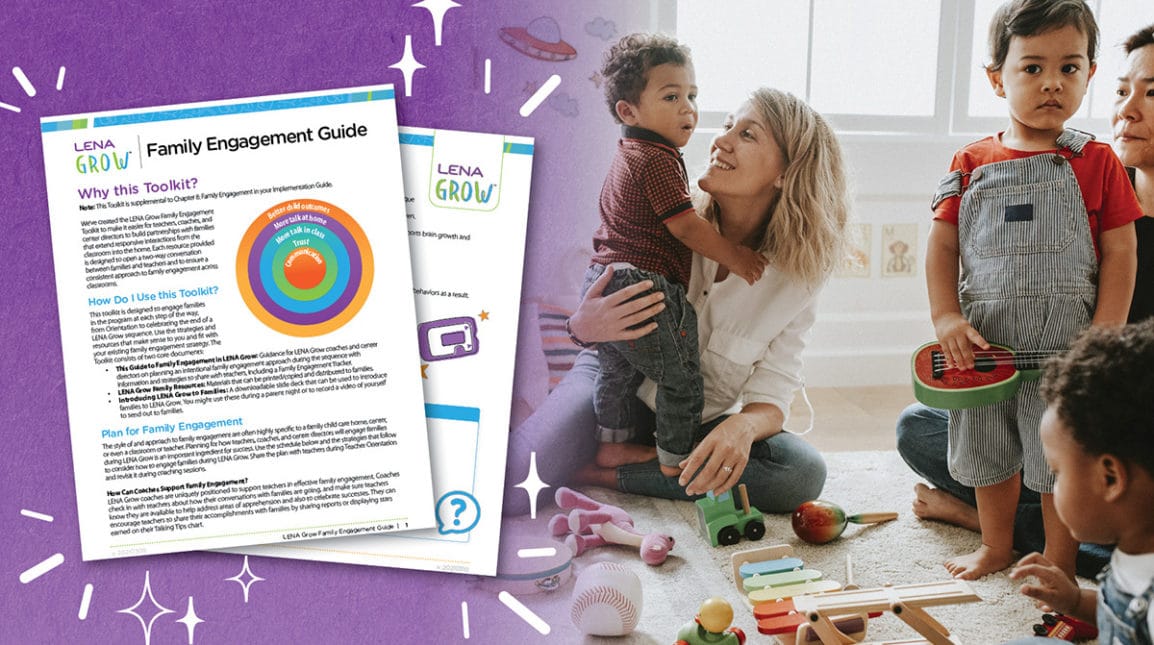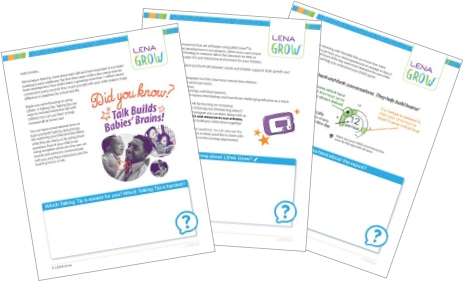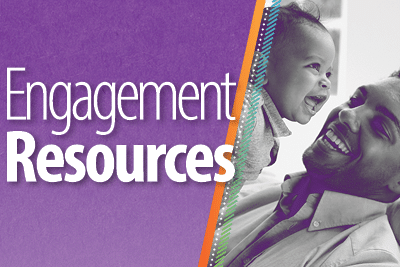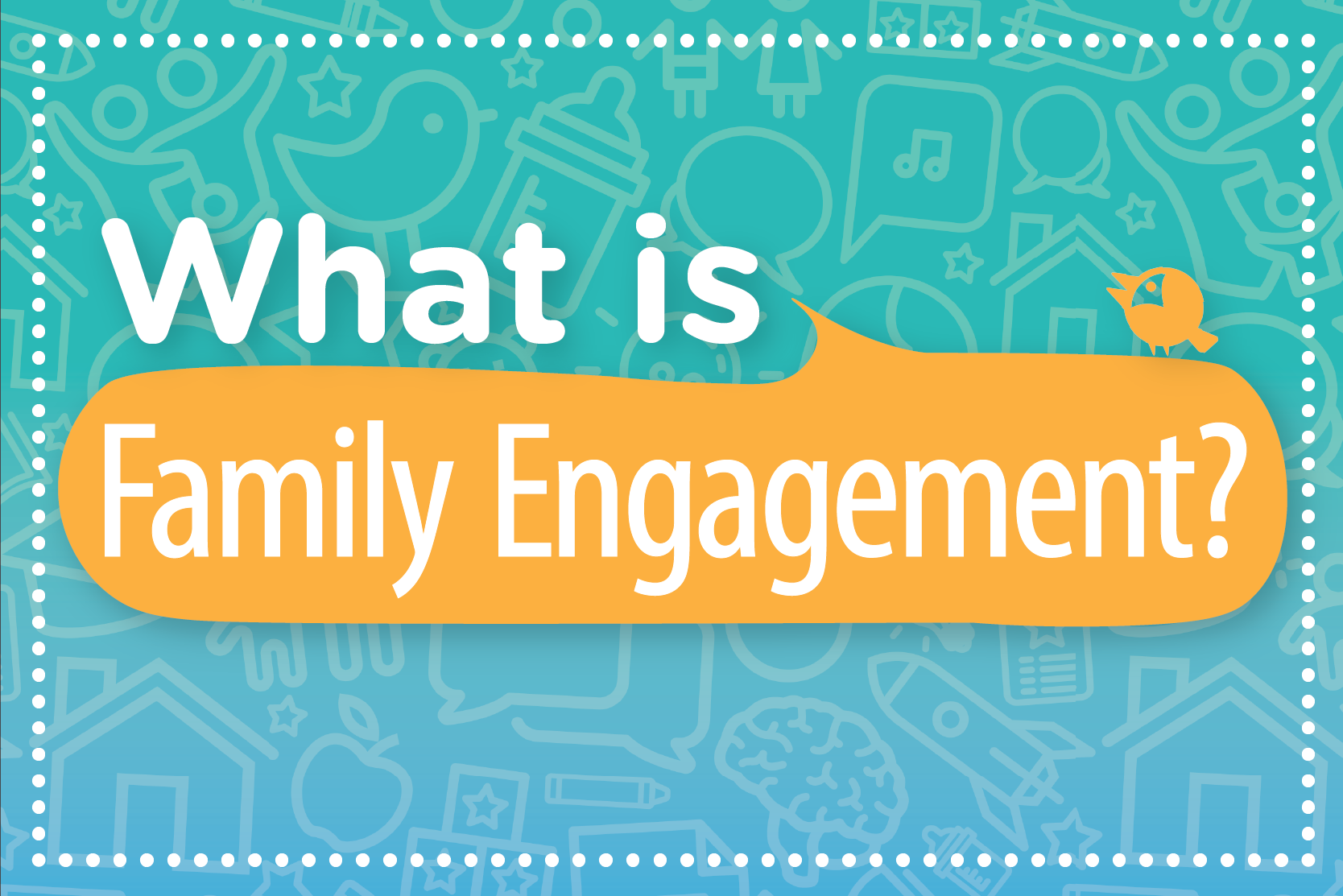Engaging families meaningfully is one of the most important parts of any child care professional’s job. It’s a part of the job that helps extend the child care professional’s impact well beyond the classroom, both as a time and a place in a child’s life.
We wanted to shine an even brighter light on family engagement in LENA Grow, a research-based professional development program for infant, toddler, and preschool teachers that couples LENA’s “talk pedometer” technology with weekly coaching sessions. That’s why we created the LENA Grow Family Engagement Toolkit — to make it easier for teachers, coaches, and center directors to build partnerships with families that extend responsive interactions from the classroom into the home.
Current LENA Grow partners can access the toolkit by clicking on the Family Engagement tab in LENA Online.
Each resource is designed to open a two-way conversation between families and teachers and to ensure a consistent approach to family engagement across classrooms. The toolkit includes resources such as:
- Letters to families explaining what’s happening in the program throughout the sequence.
- Miniature versions of LENA Grow posters for families to use at home.
- Easy-to-share social media posts.
Incorporating the Family Engagement Toolkit into an Early Head Start/Head Start program
You might use the toolkit’s Talking Tips and Conversation Staters in your family engagement plans while meeting Head Start Early Learning Outcomes Framework (ELOF) and Non-Federal share (In-Kind) requirements.
Raina Deisch, LENA Grow Implementation Specialist and former Head Start Coach, shares a few examples:
|
Goal IT-LC 3: |
Goal P-LC 3: |
|---|---|
| During mealtime, repeat and add to what your child says and does. Example: If your child says “cracker,” repeat and add “More cracker, please.” |
|
| Goal IT-ATL 9: Child shows imagination in play and interactions with others. |
Goal P-ATL 13: Child uses imagination in play and interactions with others. |
|---|---|
| During outside play, follow their lead and do what interests them. Example: Engage in pretend play from books they enjoy or pretend to be their favorite animal or superhero. |
|
| Goal IT-SE 1: Child develops expectations of consistent, positive interactions through secure relationships with familiar adults. |
Goal P-SE 1: Child engages in and maintains positive relationships and interactions with adults. |
|---|---|
| During indoor play, encourage them, be positive. Praise with specific words. Example: “Good job sharing your teddy bear with your brother.” Or “Wow, you worked hard on that block tower.” |
|
| Goal IT-C 2: Child uses understanding of causal relationships to act on social and physical environments. |
Goal P-LIT 5: Child asks and answers questions about a book that was read aloud. |
|---|---|
| During shared reading, comment on what they’re doing or looking at. Build to open-ended questions. Example: “What do you think will happen next?” |
|
| Goal IT-PMP4: Child demonstrates effective and efficient use of large muscles to explore the environment. |
Goal P-PMP 2: Child uses perceptual information to guide motions and interactions with objects and other people. |
|---|---|
| During family time, be silly and have fun with music. Example: Incorporate movement by letting your child take turns dancing and adding to the music with shakers, hand drums, or bells. |
|









